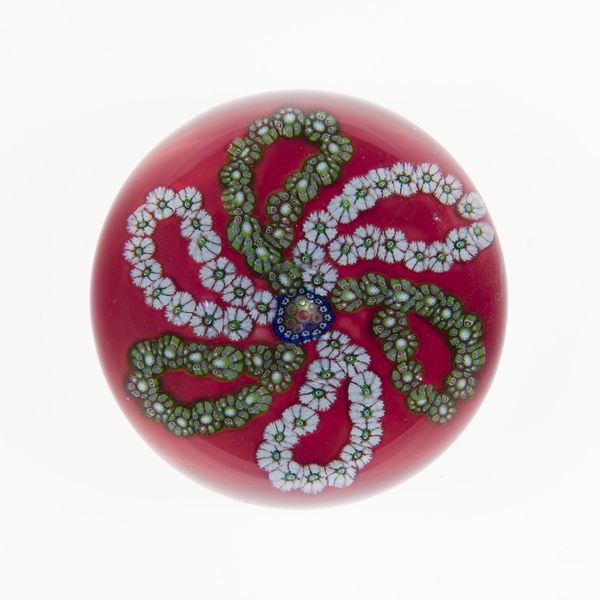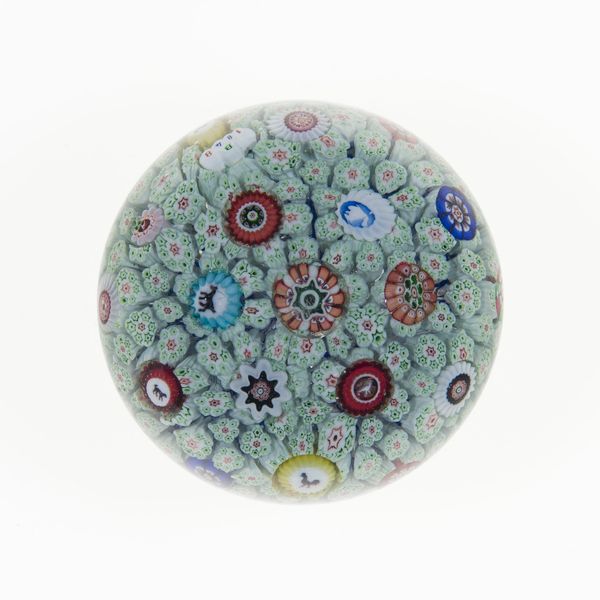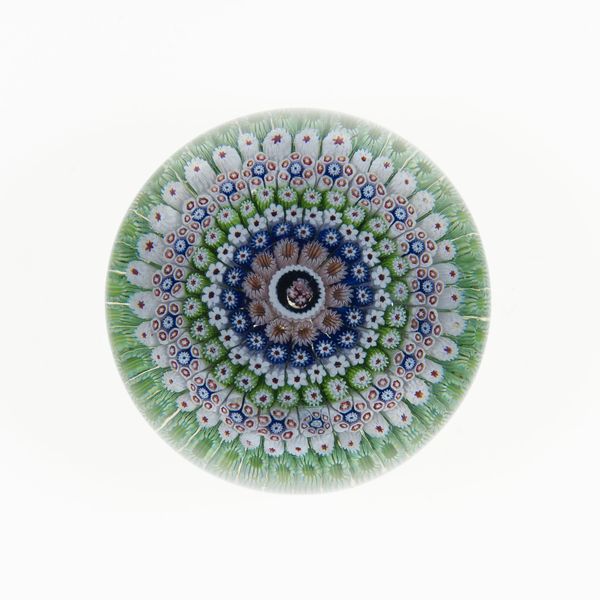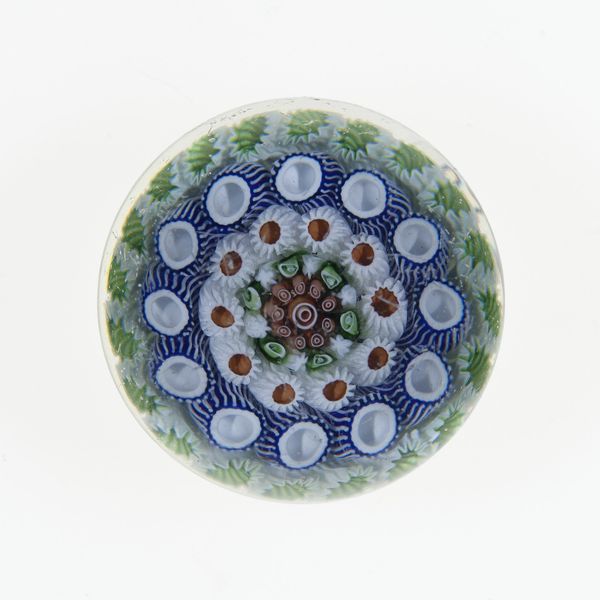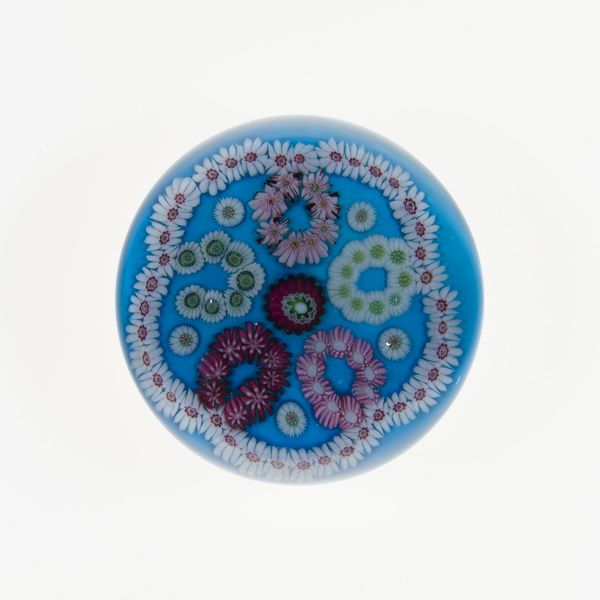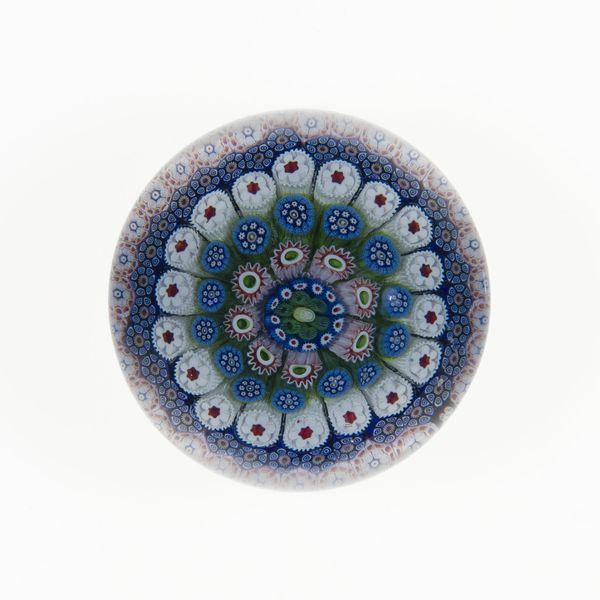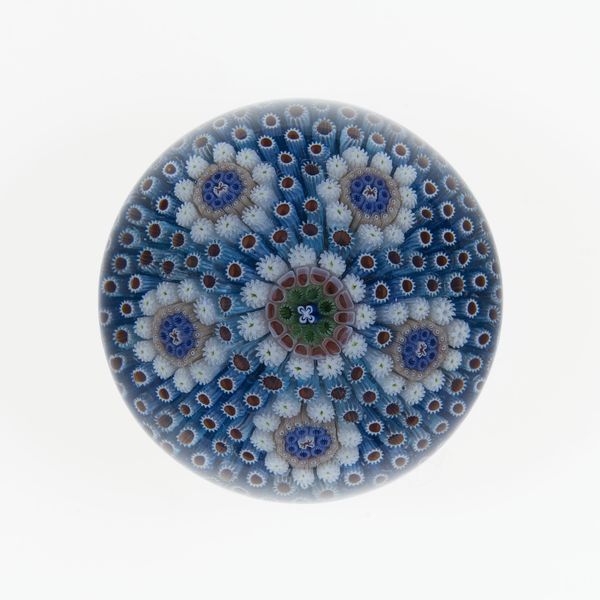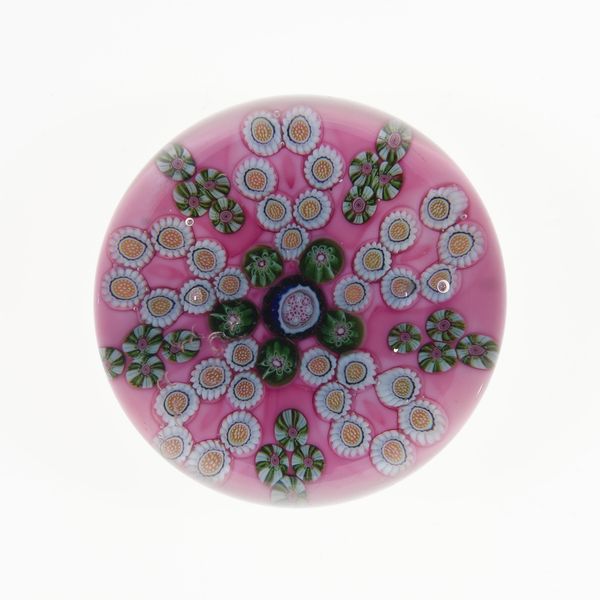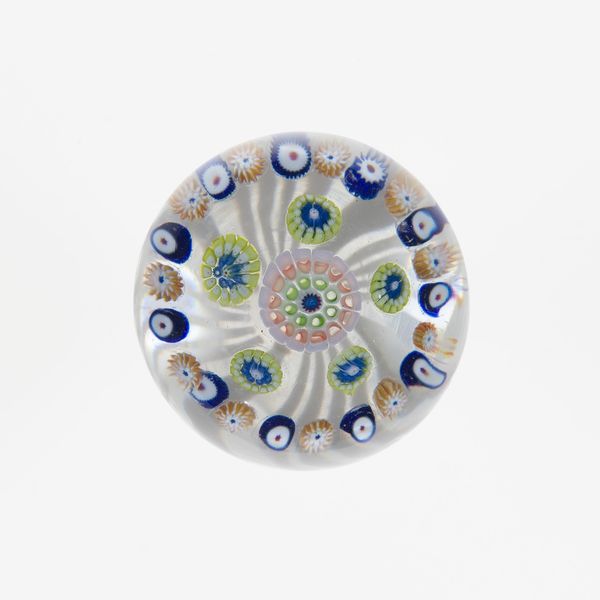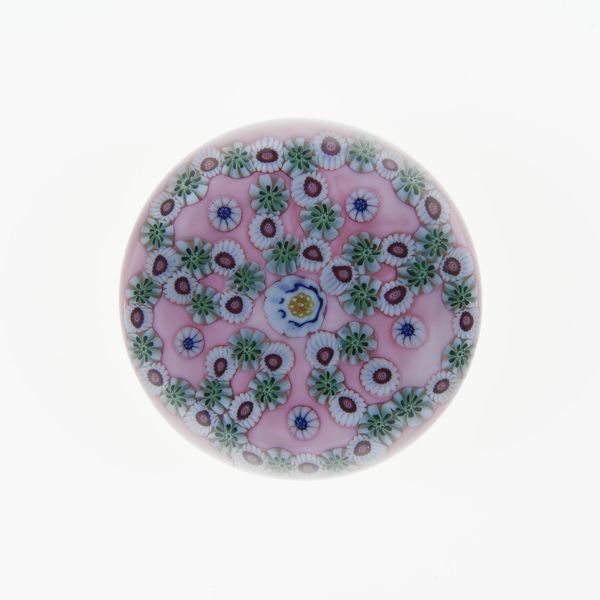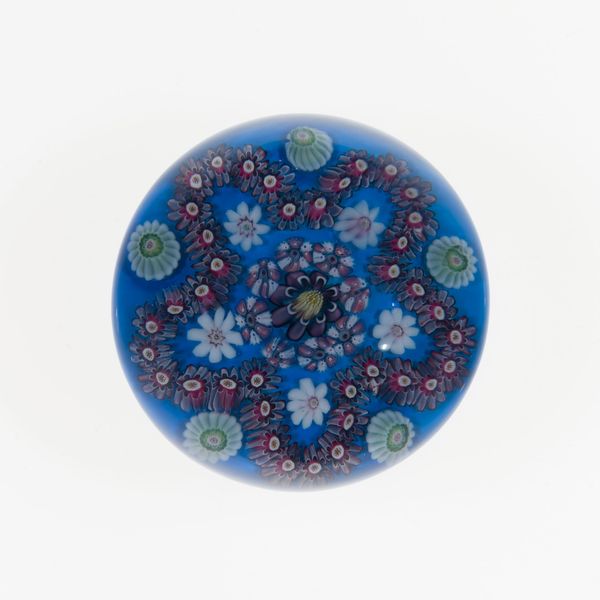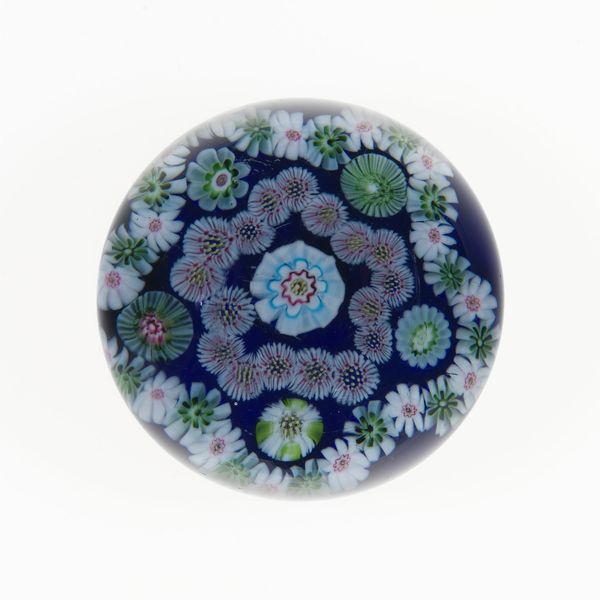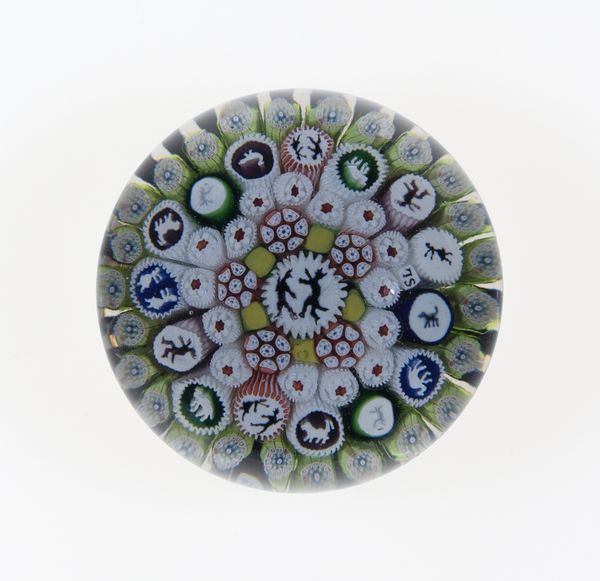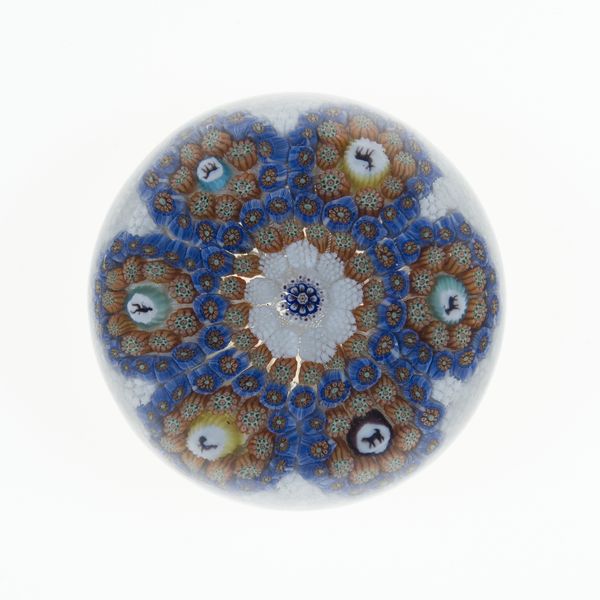
paper, glass
#
paper
#
glass
#
ceramic
Dimensions: Diam. 7.9 cm (3 1/8 in.)
Copyright: Public Domain
Curator: This beguiling object is a paperweight crafted by the Compagnie de Saint Louis, dating approximately from 1845 to 1860. It resides in the collection of The Art Institute of Chicago and is formed from glass with the incorporation of paper or ceramic elements. Editor: Oh, wow. It’s kind of hypnotic, isn’t it? It's both incredibly intricate and strangely soothing. I just want to hold it! There’s something almost biological about the pattern. Curator: Biological is interesting! Think about the conditions and labor involved in creating such a piece. The furnaces, the teams collaborating to precisely manipulate molten glass...it’s an entire mini-economy encapsulated in something so apparently decorative. And what was the purpose of Saint Louis at the time? I think that a discussion of context matters! Editor: Absolutely! Knowing it comes from a particular manufacturer pulls the dreamy haze back into focus. But the circular design...almost radial symmetry with those delicate florets swirling out from a central point. There’s this push-and-pull feeling for me between something purely decorative and what could feel very close to home for any of us who spend much of our days in a flow state staring into circles, digital interfaces. A screen's just a sort of fancy paperweight if you want to reduce it! Curator: Right, because while we call this piece functional art—a ‘paperweight’—it’s clear its real function is display, signalling wealth and taste. Look closely, and you see not paper at all, but hundreds of complex glass beads, called millefiori, that are constructed by laborers. Its value resides in skill and industrial glass production. Editor: I wonder if they saw this intense magnification effect as a form of visual drama back then? Before photography became commonplace, the tiny universe inside must have held a special kind of magic. It is a material object with clear context of production as you are pointing out, but, it seems capable of inspiring something bigger... It sort of prompts to reflect upon how much artistry we miss because we’re constantly distracted! Curator: Precisely! Next time you pick something up from the gift shop, ask yourself what’s in the material? Who benefits, and under what labor and circumstances were they created. Thanks! Editor: Definitely! Now if you will excuse me, I am on a desperate hunt for glass blowing kits!
Comments
No comments
Be the first to comment and join the conversation on the ultimate creative platform.
